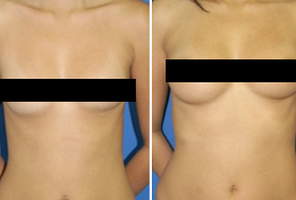Relative Value of Saline versus Silicone Implants
After the silicone controversy of the early 1990’s, the FDA, the American Society of Plastic Surgery, and the American College of Rheumatology have done extensive research into the potential danger of silicone in breast implants. As far as I can determine, today’s silicone breast implants are safe.
Saline Implants: Lower Price, but Can Cause Rippling
Saline implants have been around since the 1970’s. If you have low body fat or thin tissue on your breasts, saline implants are a poor choice because they lead to rippling; that is, when you lean forward, you can see ridging on the edge of the implant. Their value is that they are less expensive, and if you have a reasonable amount of breast tissue already, you can increase the size of your breasts, never see rippling, and at a less expensive price. Also, because saline implants are firmer, if you have minimal droopiness to your breasts, saline implants can act more like a tent post and lift up your tissue.
Silicone Implants: The Gold Standard
Silicone implants are softer, show no rippling, and they have no valve. The valve is the major reason why saline implants leak. Saline implants are filled in surgery, and therefore can be put in through smaller incisions. However, the Keller funnel now allows your surgeon to put silicone implants through a smaller incision. Overall, silicone implants are the gold standard, but unfortunately, they cost about three times as much as saline implants. It is my opinion that over the long run, you get more for your money with silicone implants.

